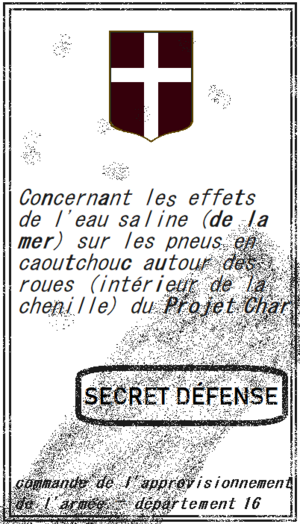Army Procurement Command (Yonderre)
| Army Procurement Command Burgoignesc: Commandement des Acquisitions de l'Armée Gothic: Waffenamt des Heeres | |
|---|---|
 Army Procurement Command insignia | |
| Motto | Ferro ignique With fire and sword |
| Founded | 1881 |
| Current form | Defence Agreement of 2000 |
| Service branches | 17 |
| Headquarters | Collinebourg, Yonderre |
| Leadership | |
| Grand Duke | Auguste IV de Somua |
| Quartermaster of the Army | General Lieutenant Siegmund Werner |
| Industry | |
| Domestic suppliers | AMY • AMG • AMS • FNC • FS • MAG |
| Foreign suppliers | |
| Related articles | |
| History | Military history of Yonderre |
The Army Procurement Command, known in Burgoignesc as the Commandement des Acquisitions de l'Armée and in Gothic as the Waffenamt des Heeres, is the central weapons and equipment procurement agency of the Serene Grand Duchy Yonderre. Replacing the previous system of quartermasters in 1881, the Army Procurement Command is responsible for the testing and acceptance of all weapons, equipment and ammunition before delivery to the Yonderian Defence Force, with strict guidelines for inspections carried out in accordance with the "Technical Delivery Conditions" programme. The Army Procurement Command is subordinated to the Ministry of Defence and consists of both military and civilian employees. It has 17 departments responsible for the procurement of everything used by the Yonderian Defence Force except housing.
The Army Procurement Command is lead nominally by the Grand Duke of Yonderre as commander-in-chief of the Yonderian Defence Force and in practice by the Quartermaster of the Army who is subordinated to the Grand Duke and to the Chief of Defence. The current Quartermaster of the Army is General Lieutenant Siegmund Werner.
Departments
| Number | Department |
|---|---|
| 1 | Ammunition |
| 2 | Service weapons |
| 3 | Light support weapons |
| 4 | Optics |
| 5 | Anti-tank weaponry |
| 6 | General equipment |
| 7 | Artillery |
| 8 | Engineer equipment |
| 9 | Fortress weapons and equipment |
| 10 | Signal equipment |
| 11 | Research |
| 12 | Rocket and missile artillery |
| 13 | CBRN defense |
| 14 | Transport vehicles |
| 15 | Logistical vehicles |
| 16 | Armoured Fighting Vehicles |
| 17 | Administration |
Controversies
Project Chariot

A 72 page report entitled "Concerning the effects of seawater's salinity on the rubber tire surrounding the steel road wheels of Project Chariot" received national ridicule after it was leaked in full to the Collinebourg Gazette in 1923 who lampooned it endlessly in an article entitled "On the army and its unparsimonious and anfractuous use of grandiloquentient sesquipedalian longwindedness in its handling of minutia". Henri d'Erlinne, Chief of Defence of the Yonderian Defence Force, was made aware of the report by the Collinebourg Gazette article and immediately ordered for the Army Procurement Command to send him a copy. Within the hour of recieving his copy of the report, d'Erlinne had ordered the Army Procurement Command's department 16 disbanded "for wasting time and resources that could be put to better use". Instead, d'Erlinne gave full control over Project Chariot to the now-restored Department for Tank Designs.
1982 tanker crisis
The 1982 tanker crisis came from the introduction of the AMY-82 main battle tank whose reduced crew of three caused uproar among tankers of the Yonderian Defence Force, going as far as then-Chief Sergeant of the Army Hercule de Bordelleaux, also a tank commander with the Guards Cuirrasier Divsion, writing a strongly worded letter of complaint to the General Staff of the Yonderian Defence Force signed by no less than 1465 enlisted men, NCOs, officers and even Marshal of Yonderre Rachet d'Everard.
Public interest in the controversy grew as Yonderian media began reporting on it, with the Collinebourg Gazette printing de Bordelleaux's letter of complaint in its entirety in September of 1982. Chief of Defence of the Yonderian Defence Force Ricardo de Bordelleaux, a distant relative of Chief Sergeant of the Army Hercule de Bordelleaux, defended the decision to reduce tank crews as a direct result of technic advances and compared it to merchanization of factory work, a comment that would prove to be extremely unpopular. Ricardo de Bordelleaux ultimately resigned from his post as Chief of Defence on October 11th 1982 after Yonderian tankers had been on strike since September 22nd. A compromise was reached with the new Chief of Defence Holger Müller in November 1982.
See also
- Yonderian Defence Force
- Quartermaster of the Army
- Adolf Meissler
- List of equipment of the Yonderian Defence Force